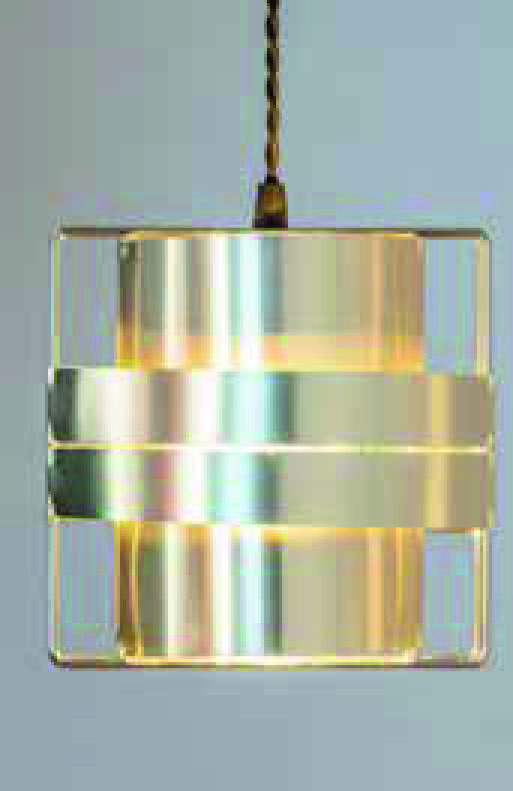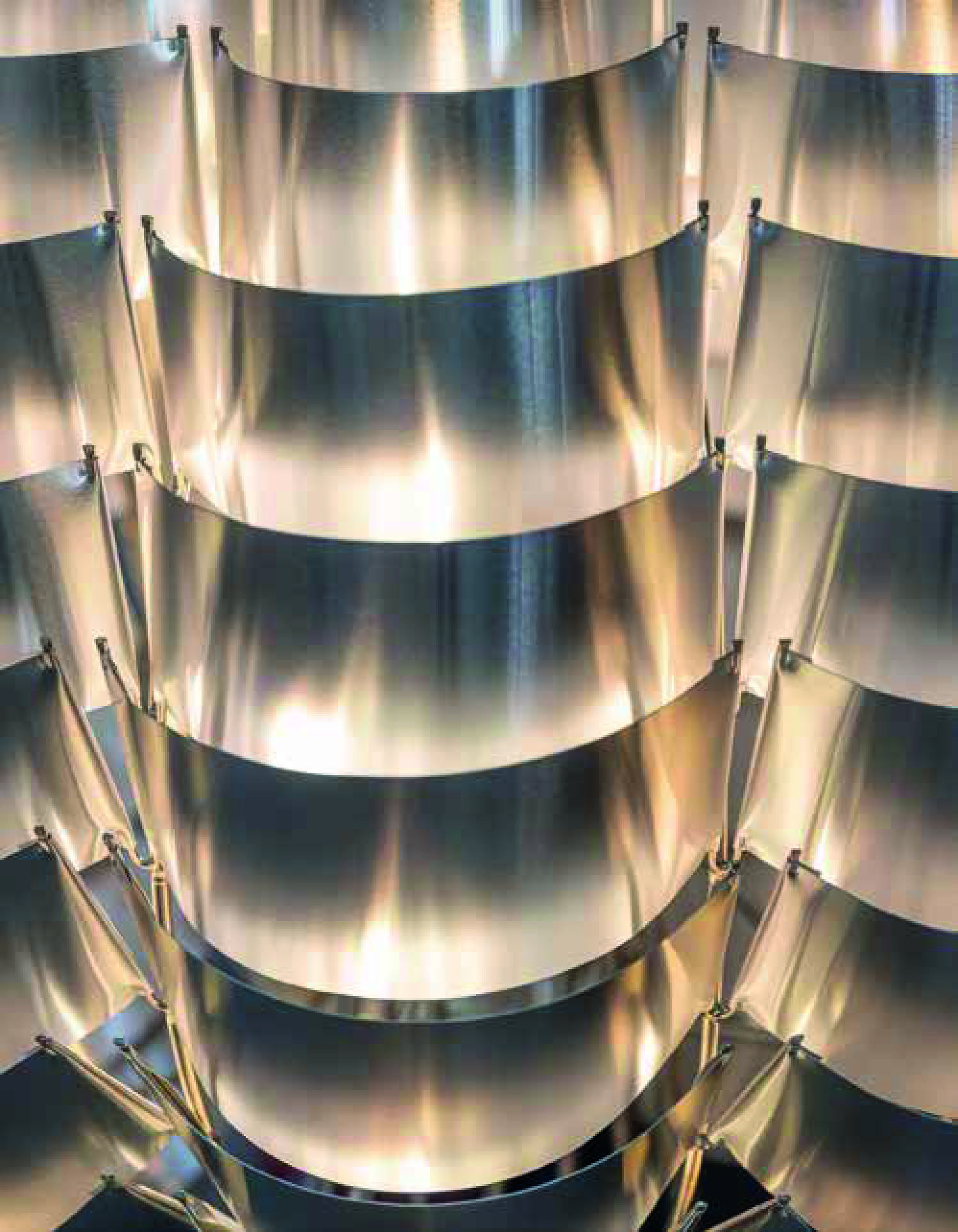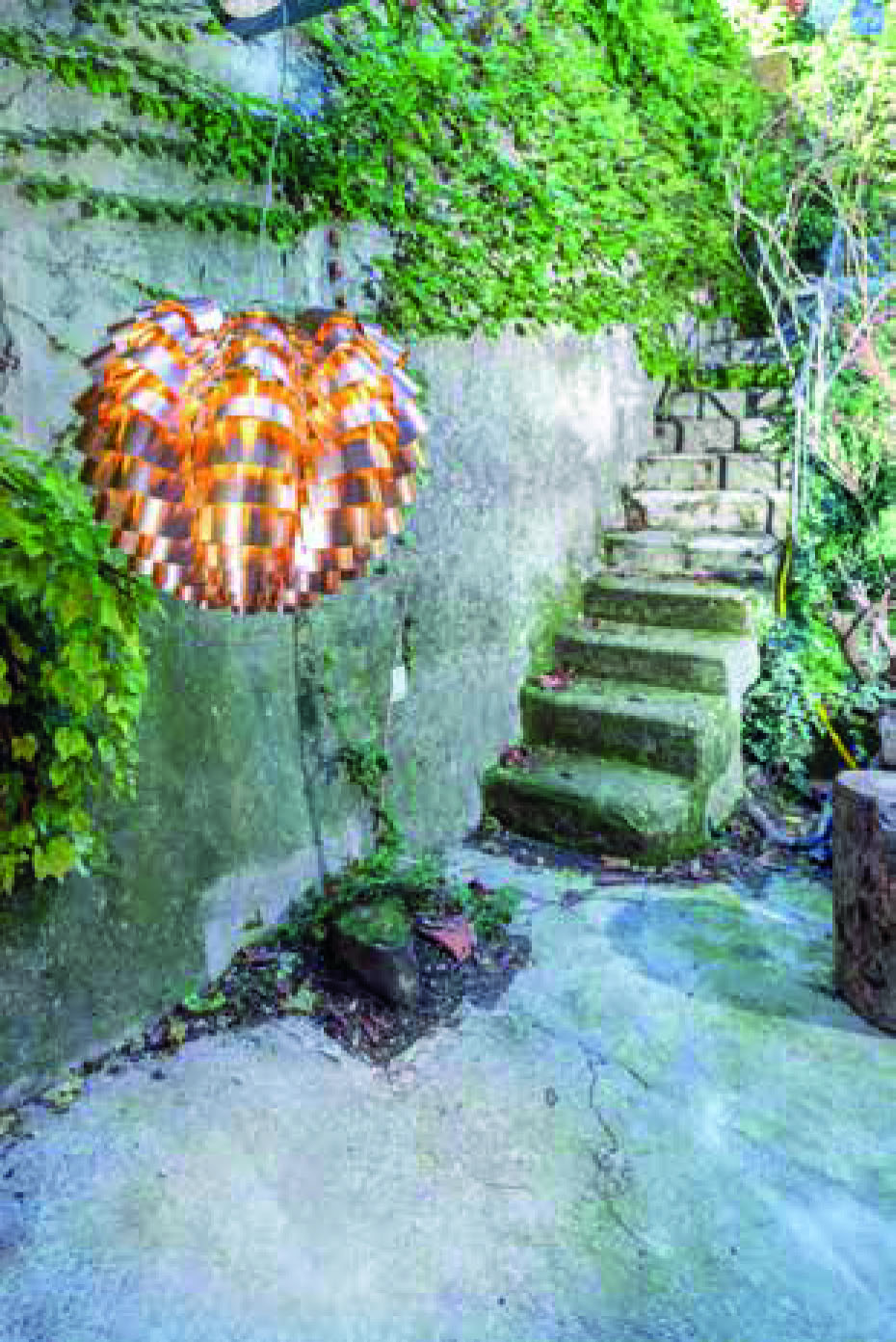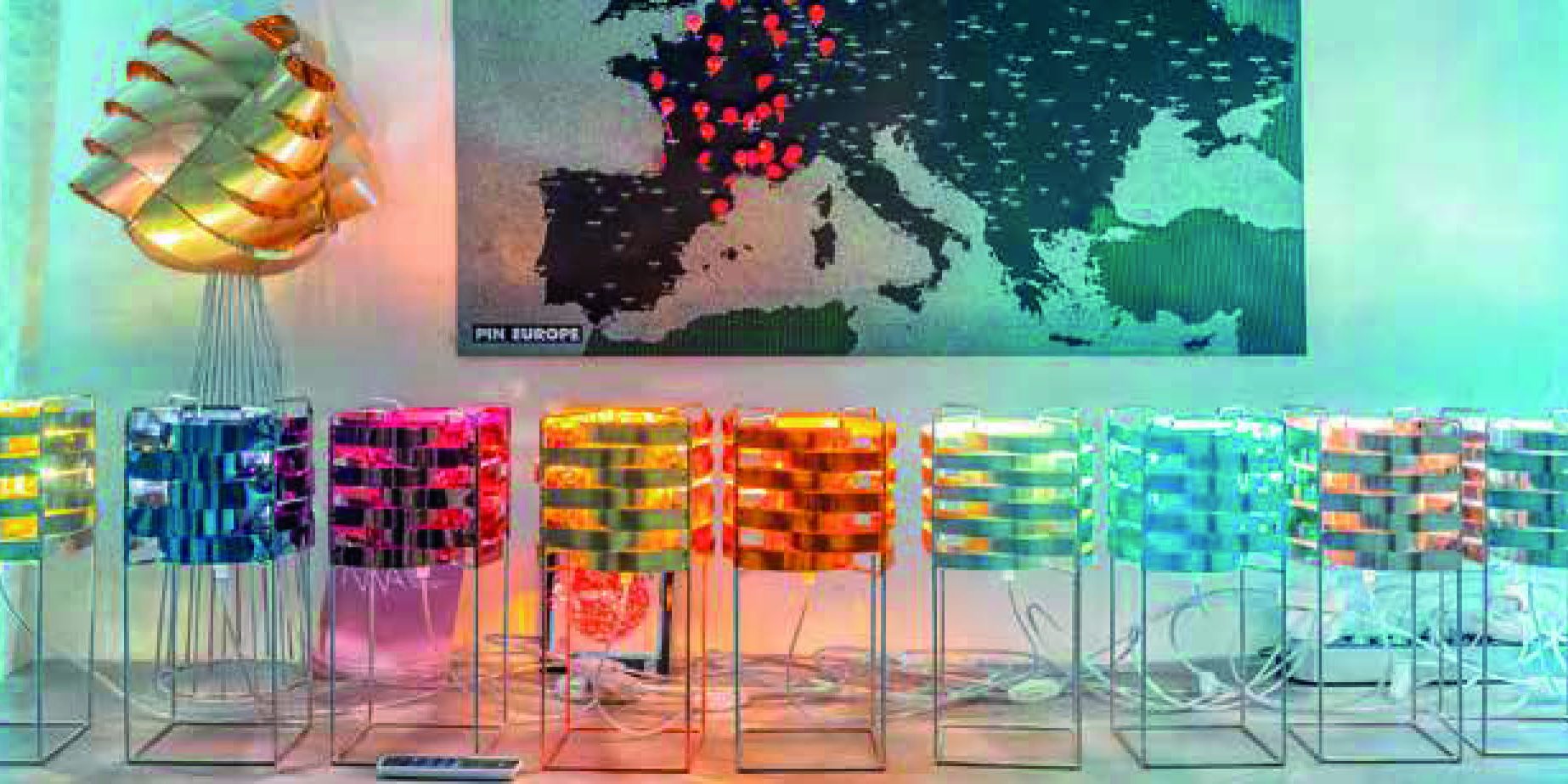More than a line it is a lineage: luminous and filial. A sequel – like a tribute without ceases renewed – that a son gives to the idea of his father. A renaissance, promised a bright future.

His father Max Sauze, had this idea in the 60s, bright and so innovative, to create lamps-sculptures, playing the multiplication, the proliferation, built in curved aluminum strips, pinched, punched, assembled on a steel wire structure: dazzling success for ten years, before the artist moved on to something else. However, with international recognition, especially for Cassiopée, designed for the Palais des Congrès in Aix-en-Provence, and which went to shine with other beautiful mysterious under other skies. “I wanted to keep this state of mind and this know-how,” explains Sébastien Sauze, the son, a management computer scientist who since 2008, in his workshop in Lambesc, has resumed production, maintaining the aesthetic line but evolving the range.
Balance, harmony of forms, right proportions, care of materials and surfaces, somewhat magical relationships between all these elements… It’s always the same story, halfway between art and crafts: “Know-how is at the center of the activity and determines the object. All operations are carried out by hand. They number in the thousands for the largest models. So you have to find the most effective way. From a relative disorder is born an organization, by repetition, sorting, alignment,” explains Sébastien.


Since the 2000s, Max Sauze’s vintage pieces have reappeared on the market to the delight of vintage lovers, but in order to meet contemporary demand, Sébastien has modified the range and modernized the technique, removed some models, imagining many novelties: from the small bedside lamp to the chandelier of more than one meter in diameter through various sizes of table lamps, floor lamps and wall lamps. The finishes have also multiplied: matte or glossy aluminum, silver, stainless steel, brushed bronze or salmon, copper, gold, and lately, a pop orange, gun metal and glossy black.
As beautiful extinct as they are lit, these pieces all have a sculptural identity: Cassiopeia, Andromeda, Atlas, Auriga, Copernicus or Orion – the best known and the transition model, father and son having developed it with four hands: “It is an extremely meticulous work of assembly and balance. Today, only steel wire structures are made in Italy. 99 blades of 20 cm each make up the Orion of 60 cm in diameter: this is 20 m of aluminum and nearly 1,500 operations for a medium-sized piece. “

Gloved hands, you have to cut, bend, pinch, bend, weld very finely. According to a repetitive organization: “I did a lot of piano,” says Sébastien. It’s kind of the same thing. Each step succeeds the previous one, it’s like the musical notes. When I make a lamp, I say there, I am in the right hand, or rather there, in the final agreement. I vibrate every step of the way. This work requires a rhythm. »
Both simple and sophisticated, these luminous sculptures, definitively freed from any convention of time or style intrigue in all respects.

Other models, sometimes tailor-made and oversized, trotted in Sébastien’s head, such as this chandelier of more than five meters long by one meter sixty, recently made and delivered and of which he thinks to develop, decline the principle: “I like so much to play with light. It is essential to me. To the point that when he goes on holiday elsewhere than at home, he can’t help but take a few models of the Sauze Line…Certain that they will make their famous effect anywhere.




